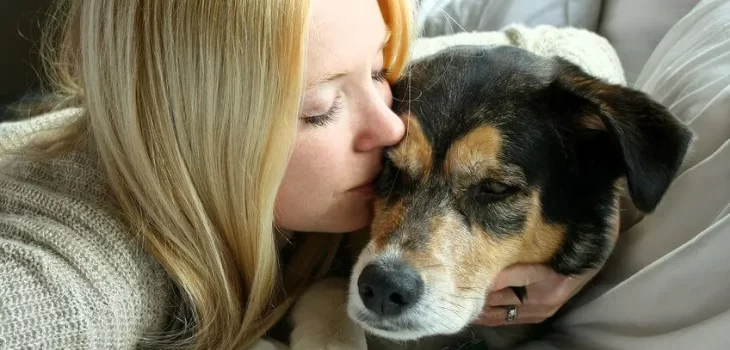 Health
Health
Is Pet Euthanasia the Kindest and Best Choice for Your Dying Pet?
Facing the end of a beloved pet’s life is heartbreaking. When a pet is terminally ill, in constant pain, or has lost the ability to enjoy daily routines, euthanasia may become a loving choice. Though it’s incredibly emotional, it can also be one of the kindest and most selfless decisions you’ll ever make.
If you’re wondering whether euthanasia is right for your pet, especially as you watch their health decline, you’re not alone. Thousands of families struggle with the same question. Here’s what to consider when evaluating whether it’s time to let your pet go.
Recognising When Treatment Is No Longer Helping
Veterinary medicine has come a long way in helping pets live longer, more comfortable lives. But there comes a point when even the best treatment can’t restore quality of life. Pets with cancer, kidney failure, neurological issues, or advanced arthritis may reach a stage where medication no longer eases their pain or restores function.
At this stage, continuing aggressive treatment might not improve your pet’s life—it may simply prolong discomfort. Choosing euthanasia is not giving up on your pet. It’s recognising that the best way to honour them is to prevent further suffering.
Gauging Quality of Life at Home
It’s difficult to make a life-or-death decision for a pet who can’t speak. That’s why observing quality of life is crucial. Ask yourself:
- Is my pet still eating and drinking normally?
- Do they respond to me with affection or awareness?
- Are they able to rest comfortably?
- Are they in pain even when on medication?
- Do they still find enjoyment in their surroundings?
If most answers are no, your pet’s quality of life may have diminished beyond repair. Tracking their condition with a journal or a daily scorecard can help you see patterns and make a more informed decision.
The Comfort of Saying Goodbye at Home
When the time comes, many families choose in-home euthanasia to provide their pet with a peaceful farewell in familiar surroundings. In-home care reduces stress, avoids unnecessary travel, and allows your pet to remain where they feel safest.
Choosing an in-home service also gives you more privacy and control over the experience. There is no rush to leave an exam room or hide your emotions. It becomes a gentle farewell that honors the bond you shared.
If you’re seeking compassionate support in Seattle, Heartstrings Pet Hospice offers professional, tender in-home pet euthanasia. Their team specialises in creating calm, comforting end-of-life experiences for both pets and their families.
Why Waiting Too Long Can Be Harmful
Pet owners often fear making the decision too early and unintentionally wait too long. Pets are resilient and often hide pain well. But by the time visible distress appears, suffering has likely been present for some time.
Prolonging the decision out of guilt or fear may lead to unnecessary pain for your pet. When you choose euthanasia before suffering overtakes joy, you protect your companion from enduring a difficult final chapter.
Speaking with Your Veterinarian
Veterinarians are here not only to treat but to guide and support you during end-of-life decisions. A conversation with your vet can offer clarity on your pet’s condition and help you understand what the coming days might look like.
If you’re exploring pet euthanasia Seattle options, ask your vet about in-home services or palliative care resources. These professionals can explain what to expect, help you evaluate your pet’s condition, and reassure you that you’re making a compassionate choice.
Creating a Peaceful Goodbye
Saying farewell doesn’t have to be rushed or clinical. A thoughtful goodbye can help bring emotional closure and honour your pet in a meaningful way.
Consider spending the day doing things your pet loves, such as sharing special treats, sitting in the sunshine, or lying in their favourite spot. During the euthanasia, you might light a candle, hold your pet close, or say words of love and gratitude.
Afterward, some families choose to create a small memorial or keep a paw print as a keepsake. These gentle acts can make the farewell more personal and healing.
Allowing Yourself to Grieve
Grieving is a natural part of losing a pet. Whether they were with you for a few years or over a decade, their absence will be felt deeply. It’s okay to cry, to feel guilt, or to need time before moving forward. Every emotion is valid.
Some find comfort in talking to friends or joining pet loss support groups. Others honour their pet through art, writing, or planting a tree. However you choose to grieve, know that healing takes time and that love leaves a lasting mark.
The Loving Choice
Making the decision to euthanise a dying pet is filled with love, not weakness. It means placing your pet’s needs before your own heartache. In doing so, you offer them a gentle release from suffering, surrounded by familiar voices and deep love.
Support from services like Heartstrings Pet Hospice can ease the journey, guiding you through the process with empathy and respect. They help families create end-of-life experiences rooted in peace, dignity, and compassion.
Your pet gave you a lifetime of companionship, joy, and unconditional love. Letting them go with grace is one final act of devotion—a beautiful way to say thank you for everything they gave.









